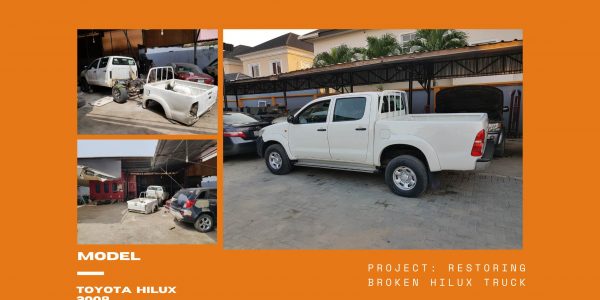1. Tyres should only be mounted by qualified technician
Tyres should only be mounted by qualified technician, using the right equipment. Avoid crude workmanship in tyre replacements, like usage of hammer, chisel and flat bars for tyre removal.
2. Rims & Diameters Should Match
Tyre and rim diameters must always match. Only use the size of tyres/rims recommended by the car manufacturer.
3. Treat your tyres with care
Never mount tyres on cracked, bent, rusted or damaged rims and never attempt to weld, brace or pass rim through heat in an effort to repair it.
4. Use Single Option for All Tyres
If more than one size of tyres/rims are recommended i.e 19/255/55 or 18/255/60 ensure you use a single option for all your tyres. The information about recommended tyre and rim sizes can be found pasted on the door side or the door frame post of cars.
5. Keep abreast of your Tyre Pressure
Check your tyre pressure periodically (including the extra tyre) within every two weeks and one month, even if the car was not driven. Use the right inflation pressure recommended for your tyres at all times, do not under inflate or over inflate tyres. Some modern cars now come with sensors that notify you of low pressure on any of your tyres including the extra tyre. Recommended tyre pressure can be found pasted on the door side or the door frame post of cars. Everyone using a car should learn how to check tire pressure with pocket tire pressure reader available in shops.
6. Inspect Tyres Regularly
Always inspect your tyres for cuts, slashes and bulges on the side walls as these can lead to blowouts.
7. Be Mindful of Tyre Exipry Dates
Tyres do have expiry dates, ensure that you replace your tyres once expired. The Lagos State Government has started enforcing that only tyres that are not expired are mounted on cars.
8. Flat Tyre Care
If you have a flat tyre, if the tyre is removed from the rim before mending, ensure that you redo the wheel balance for the particular tyre.
9. Changing a Flat Tyre
If you have flat tyre, park your car safely away from flowing traffic, bring out your tools and extra tyre. Loosen the wheel nuts partially before jacking up the tyre. Ensure that the car sits properly on the jack. When you fit a replacement tyre put the wheel nuts and tighten as much as possible when the tyre is still free before lowering the jack. After bringing down the jack apply sufficient force to tighten wheel nuts.
10. Conduct Periodic Wheel Balancing & Alignment
Carry out regular periodic wheel balancing and alignment to preserve tire life, improve vehicle handling and fuel economy.
Wheel balancing is maintaining the tyres on a perfect radial. If you’ve ever used the spinner of a top loader washing machine, you can easily understand what wheel balance is. When you put your clothes in the drainer/spinner, if the load is not properly distributed the spinner basket will wobble and vibrate the machine if you attempt to spin the clothes. This happens to vehicles when the wheels are not balanced. There are now sophisticated computerised machines that carry out those functions. For instance, our workshop invested in a computerised wheel balancer and a 3d wheel balancer.
Alignment is the perfect positioning and orientation of your tires on a perfect straight line proportionate to one another on the straight chassis of the vehicle. Badly aligned wheels affect wear and tear of tyres, ball joints, tie rods etc.






